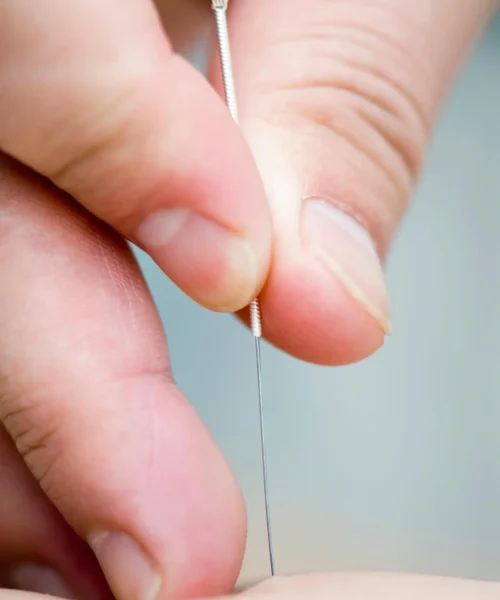Dry Needling for Plantar Fasciitis in Adelaide
Plantar fasciitis is a common condition that causes heel pain and discomfort in the foot. As patients seek effective treatments to alleviate their symptoms, one emerging option is dry needling for plantar fasciitis in Adelaide. This article explores the effectiveness of dry needling therapy for plantar fasciitis, detailing its technique, benefits, and how it compares to other plantar fasciitis treatment options.
What is Dry Needling for Plantar Fasciitis & How Does it Work?
Dry needling is a technique that involves the use of very thin needles inserted into tight muscle areas, called trigger points. This method is known as trigger point therapy for plantar fasciitis. It is used to help with plantar fasciitis pain relief, especially in the calf muscle and plantar fascia.
By placing the needles in specific spots, dry needling for foot pain can improve blood flow and help muscles relax. This helps reduce heel pain, making it easier to move around. People who receive dry needling for foot disorders often notice less pain and better mobility, which helps them get back to normal activities faster.
When done by Adelaide dry needling, this treatment can be very helpful. It targets the actual cause of the pain—tight muscles or trigger points—and is considered an effective treatment for plantar fasciitis. Compared to some traditional treatments, many find heel pain dry needling in Adelaide gives better results.

Why Choose Us for Your Care?
At KMW Podiatry, we provide exceptional podiatry services across Adelaide, ensuring every patient receives personalized, high-quality care.
Health Scheme Support
We support patients under Workcover, EPC, NDIS, DVA, and other government schemes, providing consistent care for everyone.
Latest Technologies
We adopt the latest technologies to offer advanced podiatric care, providing innovative solutions for your foot health.
Convenient Locations
With clinics In stand-alone locations, GP Medical centers and Home Visits, our services are easily accessible, making it convenient for you to receive top-notch care.
24/7 Emergency Help
We are available around the clock for emergency assistance, ensuring you get the help you need whenever you need it.
Is Dry Needling for Plantar Fasciitis Effective?
The effectiveness of dry needling for plantar fasciitis has gained attention in recent years, with numerous studies suggesting positive outcomes. Many patients report significant pain relief following dry needling sessions, attributing their improved condition to the targeted nature of the treatment.
This technique not only reduces pain but also enhances mobility, allowing individuals to engage more fully in daily activities.
Research has shown that dry needling can lead to a decrease in muscle tension and improved function in patients with plantar fasciitis. The localized stimulation of trigger points can promote a healing response in the affected tissues, ultimately aiding recovery.
Additionally, the combination of dry needling with other modalities, such as physical therapy, can further enhance its effectiveness. Overall, the growing body of evidence supports the use of dry needling as a promising treatment option for managing plantar heel pain.

Treatment Options for Dry Needling for Plantar Fasciitis
Treatments are different for every person depending on the patient’s symptoms and needs. Some treatment strategies may include:
If you are experiencing plantar fasciitis or have any other foot or ankle concerns, we encourage you to contact Keep Me Walking Podiatry at 1800962113 to schedule an appointment. Our team is here to help you achieve relief and better foot and ankle health.
FAQ's for Dry Needling for Plantar Fasciitis
What is dry needling for plantar fasciitis?
Dry needling for foot health is a physical therapy method that uses fine needles to relax tight muscles and reduce foot pain. For people with plantar fasciitis, it can ease the pain and help them move better.
How effective is dry needling in the treatment of plantar fasciitis?
Studies, including major reviews, support the dry needling effectiveness for plantar fasciitis. Many patients have reported less pain and better function after getting this treatment for their plantar fasciitis heel pain.
Is dry needling similar to acupuncture?
While dry needling and acupuncture both use needles, they are different. Dry needling heel pain treatment focuses on relaxing tight muscles and easing pain, especially in people with plantar fasciitis, while acupuncture follows traditional Chinese medicine.
What are trigger points in the context of plantar fasciitis treatment?
Trigger points are tight muscle spots that can cause pain in other areas. In plantar fasciitis treatment, trigger point therapy helps by using needles to relax these spots and reduce pain in the foot.
Can dry needling be used as a standalone treatment for plantar fasciitis?
Yes, but it works best when combined with other plantar fasciitis treatment options, like stretching or strengthening exercises. A combination of methods gives the best results in most cases.
Are there any side effects associated with dry needling for plantar heel pain?
Some people may have mild side effects like soreness or bruising after dry needling for plantar fasciitis. These usually go away quickly. To stay safe, it’s best to see a professional such as an Adelaide podiatry dry needling expert.
How long does it take to see results from dry needling in patients with plantar heel pain?
Some people may have mild side effects like soreness or bruising after dry needling for plantar fasciitis. These usually go away quickly. To stay safe, it’s best to see a professional such as an Adelaide podiatry dry needling expert.
Who is a good candidate for dry needling treatment?
Anyone with tight muscles or plantar heel pain may benefit from dry needling for muscle pain Adelaide. If you have plantar fasciitis, talk to your doctor or therapist to see if dry needling for plantar fasciitis Adelaide is right for you.
